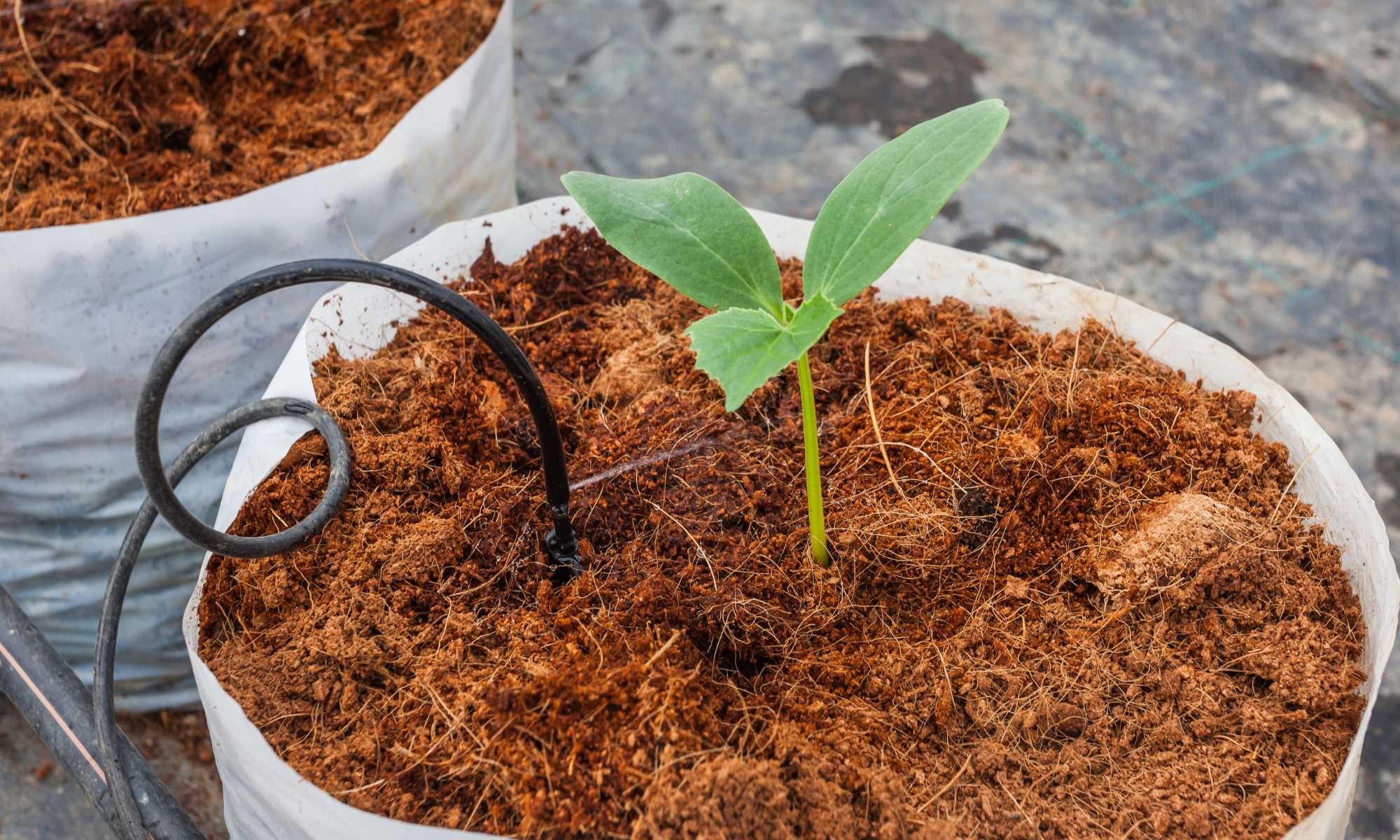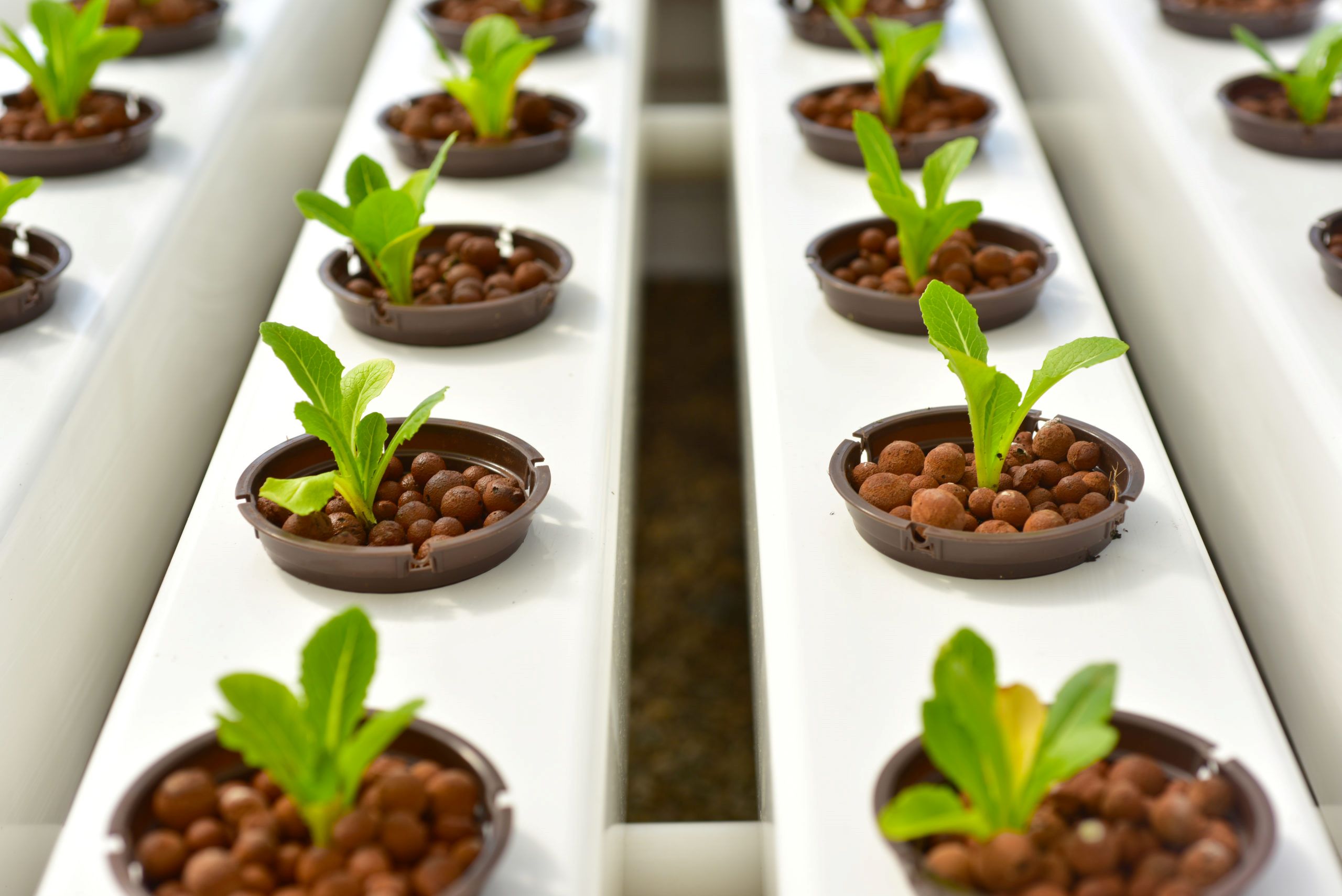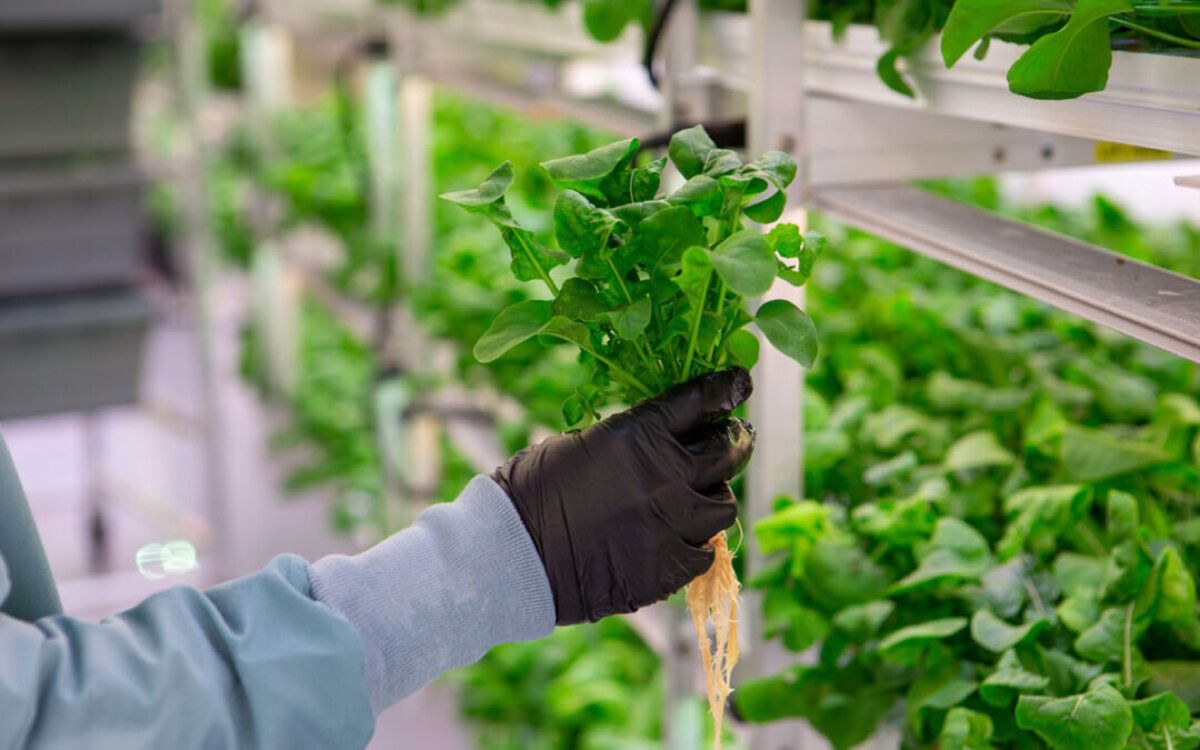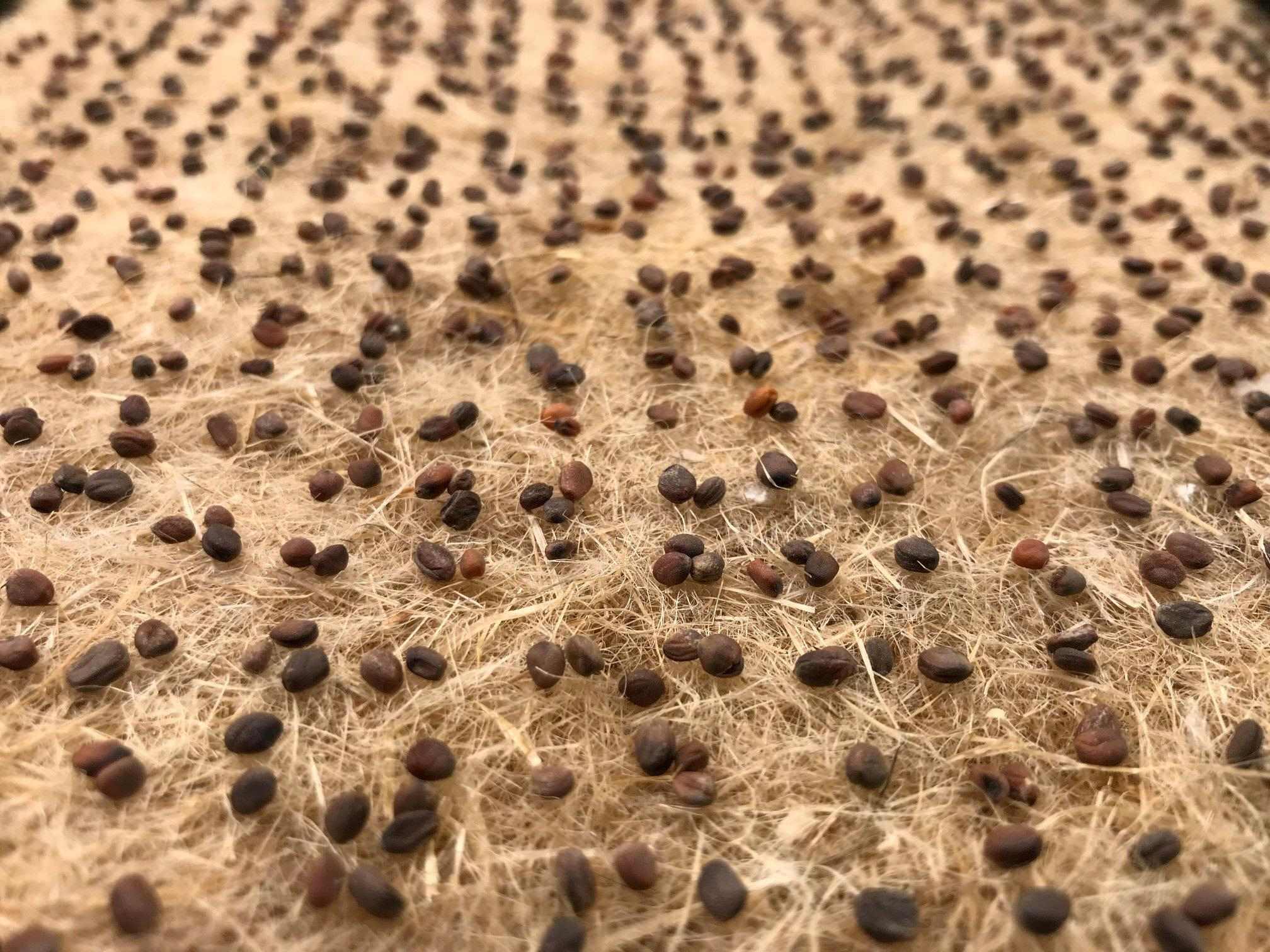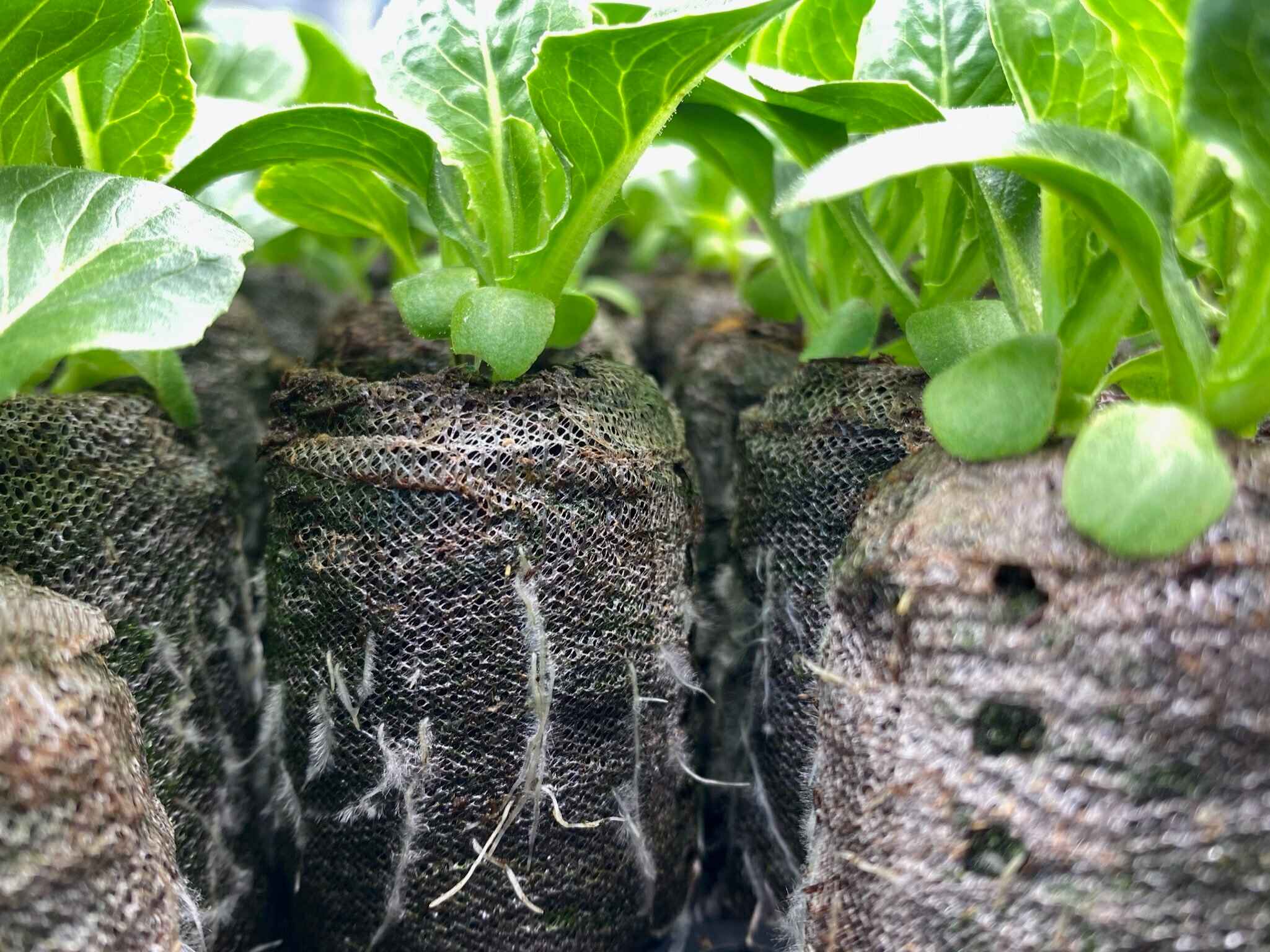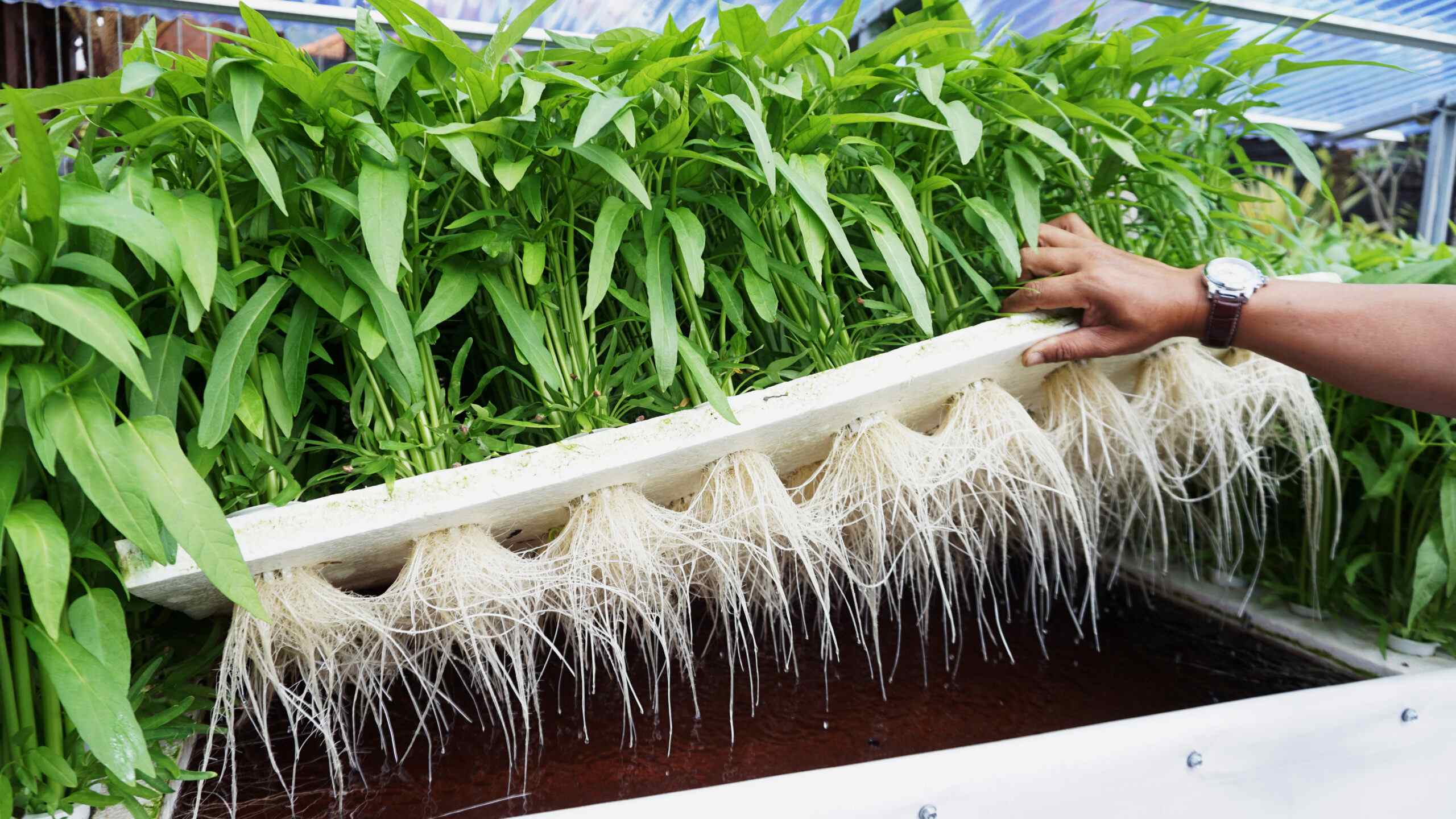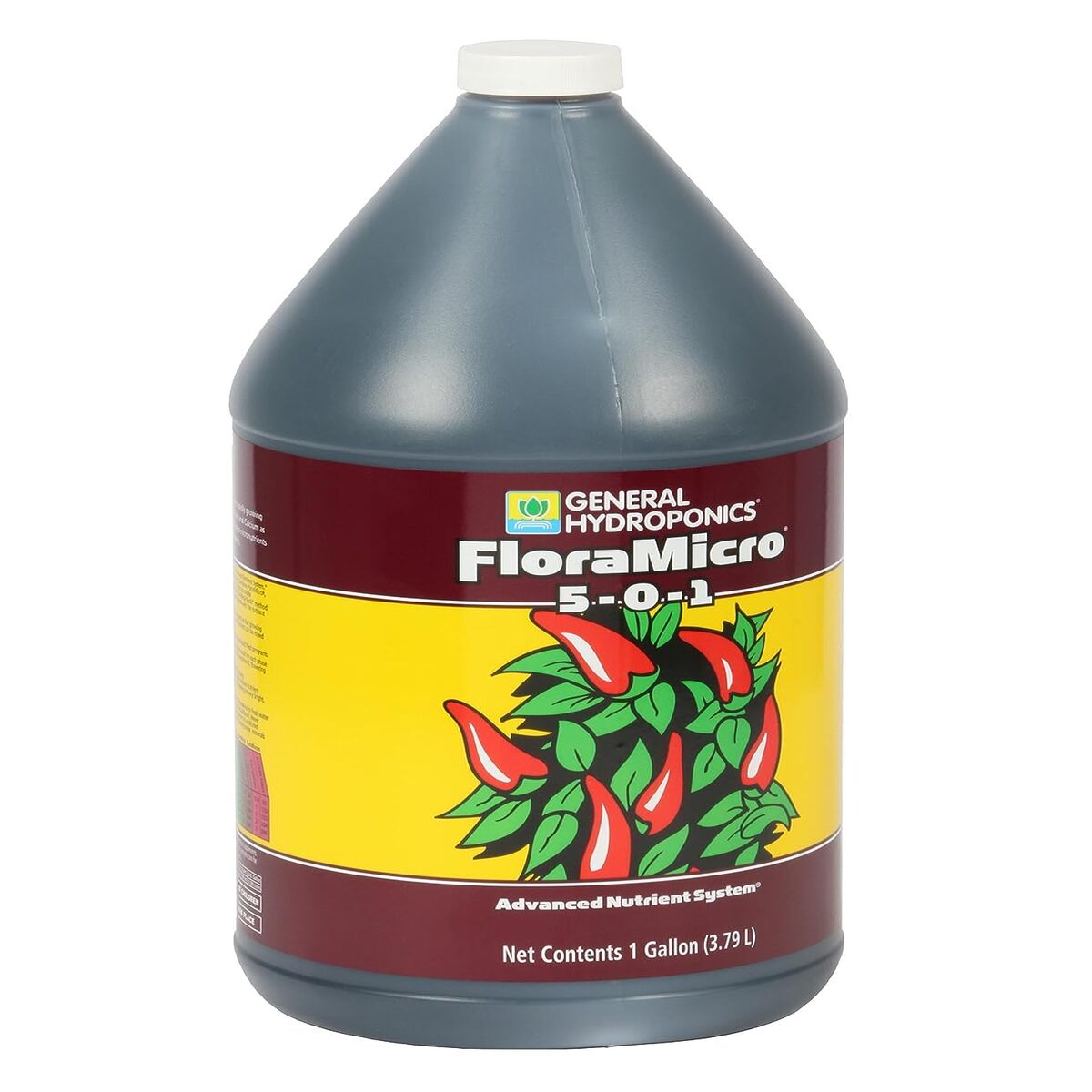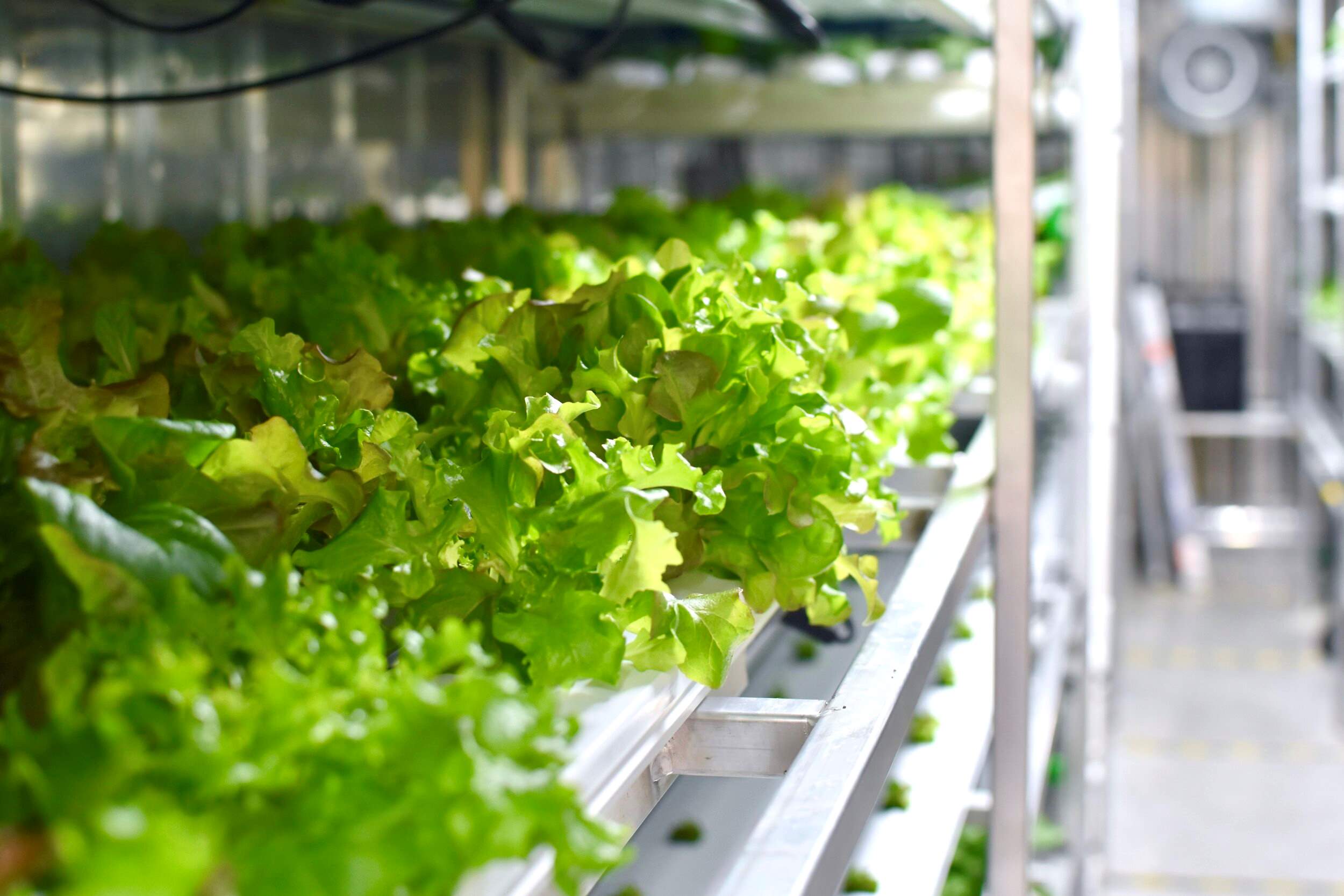Home>Types of Gardening>Ornamental Gardening>How To Use Rockwool In Hydroponics
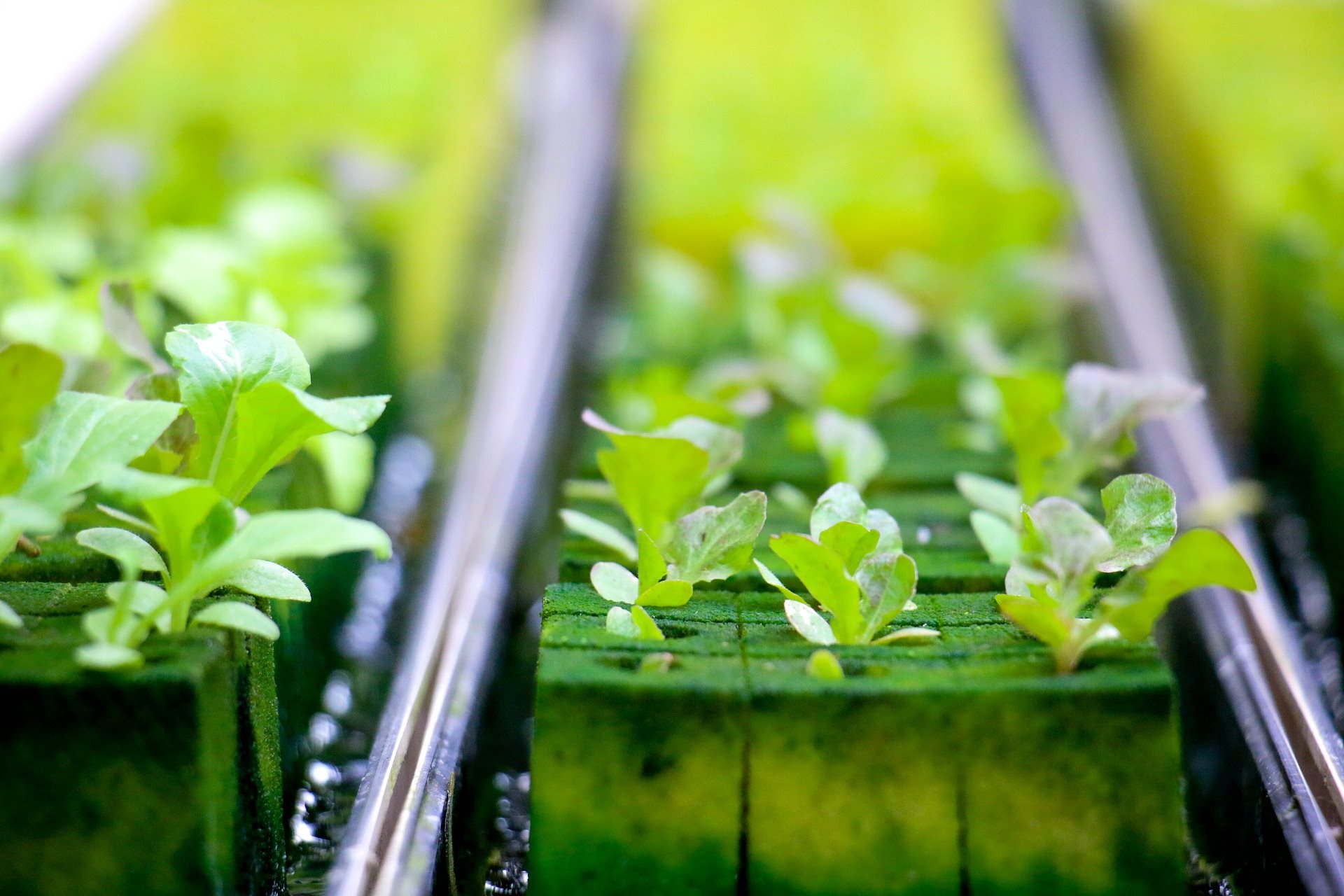

Ornamental Gardening
How To Use Rockwool In Hydroponics
Modified: January 22, 2024
Learn how to effectively use Rockwool in hydroponics for your ornamental gardening. Improve your growing techniques and maximize plant health and growth with this versatile growing medium.
(Many of the links in this article redirect to a specific reviewed product. Your purchase of these products through affiliate links helps to generate commission for Chicagolandgardening.com, at no extra cost. Learn more)
Table of Contents
- Introduction
- What is Rockwool?
- Advantages of Using Rockwool in Hydroponics
- Disadvantages of Using Rockwool in Hydroponics
- Choosing and Preparing Rockwool for Hydroponics
- Planting Seeds or Seedlings in Rockwool
- Caring for Plants in Rockwool
- Nutrient Solution Management with Rockwool
- Troubleshooting Common Issues with Rockwool in Hydroponics
- Conclusion
Introduction
Welcome to the world of hydroponics, where soil is replaced with a soilless growing medium to cultivate healthy and abundant plants. One popular choice of growing medium in hydroponics is Rockwool. Rockwool is a versatile and effective substrate that provides excellent support, aeration, and water retention for plants’ root systems. In this article, we will explore the benefits and drawbacks of using Rockwool in hydroponics, as well as provide guidance on how to use and care for Rockwool within your hydroponic system.
Rockwool, also known as stone wool, is a man-made material that is derived from molten rock, primarily basalt or slag. During the manufacturing process, the molten rock is spun into fibers, which are then compressed and formed into cubes, slabs, or plugs for use in hydroponics. This inert and sterile material has a low pH, which helps maintain an optimal nutrient balance for plants.
One of the key reasons gardeners and hydroponic enthusiasts opt for Rockwool is its excellent water retention capabilities. The fibers in Rockwool can hold large amounts of water while still providing sufficient oxygen to the roots. This promotes healthy root development and reduces the risk of over or under-watering.
Furthermore, Rockwool has exceptional insulation properties, making it an ideal choice for maintaining a stable root zone temperature. This can be particularly advantageous in regions with extreme climates, as it protects the plants from temperature fluctuations that can stress the roots and impede growth.
Additionally, Rockwool is a versatile growing medium that can be used for both seeds and seedlings. Its fibrous structure makes it easy to plant seeds directly into the Rockwool cubes or plugs, providing a secure environment for germination and early growth. Seedlings can also be transplanted from other mediums, such as soil or peat pots, directly into Rockwool without causing damage to the delicate roots.
In the following sections, we will delve deeper into the advantages and disadvantages of using Rockwool, explore how to properly prepare and plant in Rockwool, as well as provide guidance on nutrient solution management and troubleshooting common issues that may arise when using Rockwool in a hydroponic system.
By the end of this article, you will have a comprehensive understanding of Rockwool as a hydroponic growing medium, enabling you to make informed decisions about incorporating this versatile substrate into your own ornamental gardening endeavors. So let’s dive in and discover the world of Rockwool in hydroponics!
What is Rockwool?
Rockwool, also known as stone wool, is a widely-used growing medium in hydroponics. It is made from volcanic rock or rock slags that are melted and spun into fine fibers. These fibers are then compressed and formed into various shapes, such as cubes, slabs, or plugs, making it convenient to use in hydroponic systems.
One of the main advantages of Rockwool is its excellent water retention capabilities. The fibers in Rockwool can absorb and hold a considerable amount of water while still allowing air to reach the roots. This unique property helps to maintain an optimal moisture level in the root zone, preventing both overwatering and underwatering. The balanced water-air ratio promotes healthy root development and enhances nutrient absorption.
Rockwool also has great insulation properties, which can be beneficial in maintaining a suitable root zone temperature. The fibers act as a thermal barrier, preventing temperature fluctuations that can be detrimental to the plants’ growth. This insulation feature is particularly advantageous in regions with extreme climates, where Rockwool can protect plants from both cold and heat stress.
Another advantage of Rockwool is its favorable pH for plant growth. It typically has a slightly acidic pH, which allows for efficient nutrient uptake by the roots. This pH range is favorable for most ornamental plants, making Rockwool a suitable choice for a wide variety of flowers, herbs, and other decorative plants.
Furthermore, Rockwool is an inert and sterile medium, minimizing the risk of pests and diseases. Its structure does not provide a suitable environment for pathogens to thrive, reducing the chances of plant infections. This makes Rockwool a clean and safe substrate for growing healthy plants.
When it comes to using Rockwool in hydroponics, it is important to note that it is a non-renewable resource. As such, proper disposal and recycling methods should be followed to minimize environmental impact. However, Rockwool’s durability and long lifespan make it a sustainable choice in terms of its longevity and reusability.
In summary, Rockwool is a popular choice of growing medium in hydroponics due to its water retention capabilities, insulation properties, favorable pH, and sterile nature. These characteristics make it an excellent choice for ornamental gardening, providing optimal conditions for plant growth and development. In the next sections, we will explore the advantages and disadvantages of using Rockwool in more detail, along with practical tips on preparing Rockwool for planting and achieving successful results in hydroponics.
Advantages of Using Rockwool in Hydroponics
Rockwool is a favored choice among hydroponic gardeners for several reasons. Let’s explore some of the key advantages of using Rockwool as a growing medium in hydroponics:
- Superb Water Retention: Rockwool has excellent water retention capabilities, allowing it to hold water while still providing adequate oxygen to the roots. This ensures that plants receive a consistent supply of moisture, reducing the risk of over or under-watering and promoting healthy root growth.
- Optimal Aeration: The fibrous structure of Rockwool promotes proper aeration within the root zone. The air pockets created within the material allow for the exchange of gases, ensuring that the roots receive the necessary oxygen for respiration. This helps prevent root suffocation and promotes vigorous root development.
- Temperature Regulation: Rockwool acts as an insulator, buffering against temperature fluctuations that can negatively affect plant growth. It helps to maintain a stable root zone temperature, protecting the roots from extreme heat or cold. This thermoregulatory property is particularly important in climates with harsh temperature variations.
- Promotes Healthy Root Development: The fibrous structure of Rockwool provides a supportive environment for root growth. It allows the roots to easily penetrate and anchor themselves within the medium, resulting in strong and healthy root systems. Robust root development leads to increased nutrient uptake and overall plant health.
- Sterile and Pathogen-Free: Rockwool is an inert and sterile medium, meaning it is free from pests, diseases, and weed seeds. This reduces the risk of plant infections and ensures a clean growing environment. Its sterile nature makes it particularly advantageous for hydroponic systems, where plants rely solely on the nutrient solution for their growth.
- Versatility: Rockwool can be used for starting seeds or transplanting seedlings. Its fibrous structure provides a secure and stable environment for young plants, helping them establish strong roots. It is also compatible with a wide range of ornamental plants, making it a versatile choice for hydroponic gardening.
By harnessing these advantages, gardeners can cultivate healthy and thriving plants in their hydroponic systems. However, it is essential to consider the potential drawbacks of using Rockwool as well. In the next section, we will explore some of the disadvantages to provide a comprehensive understanding of its suitability and considerations for use in hydroponics.
Disadvantages of Using Rockwool in Hydroponics
While Rockwool offers numerous advantages as a growing medium in hydroponics, it is important to consider the potential disadvantages. Understanding these drawbacks will help you make informed decisions about whether Rockwool is the right choice for your hydroponic gardening needs. Let’s explore some of the main disadvantages:
- pH Adjustment: Rockwool has a slightly acidic pH when it is first obtained. This pH may need to be adjusted before introducing plants to ensure optimal nutrient uptake. Additional monitoring and adjustments may be required throughout the growth cycle of the plants.
- Water Retention Concerns: While Rockwool has excellent water retention properties, it is also possible for it to hold too much water. Over-watering can lead to oxygen deficiency in the root zone, causing root rot and other issues. Careful monitoring and proper irrigation management are necessary to avoid this problem.
- Environmental Impact: Rockwool is a non-renewable resource, meaning it is not sustainable in the long term. It is important to dispose of used Rockwool properly and consider recycling options to minimize environmental impact.
- Initial Preparations: Rockwool needs to be properly prepared and conditioned before planting. This involves soaking the Rockwool cubes or slabs in pH-balanced water, rinsing out excess minerals, and allowing them to drain. It is an additional step that needs to be taken to ensure the optimal growing conditions for plants.
- Mineral Accumulation: Over time, minerals can accumulate within the Rockwool, potentially leading to nutrient imbalances. Periodic leaching or flushing with pH-balanced water can help prevent the buildup of excess minerals and maintain nutrient balance in the root zone.
- Handling Challenge: Rockwool can be irritating to the skin and lungs, so proper safety precautions should be taken when handling and working with it. Wearing gloves and a mask can help protect against any potential irritations or discomfort.
Despite these disadvantages, many gardeners still find Rockwool to be a reliable and effective choice for their hydroponic systems. By acknowledging and addressing these concerns, you can overcome the challenges associated with Rockwool and harness its benefits to achieve successful and fruitful cultivation.
Choosing and Preparing Rockwool for Hydroponics
When using Rockwool as a growing medium in hydroponics, it is essential to choose the right type of Rockwool and properly prepare it before introducing it to your hydroponic system. Here are some guidelines to help you make the appropriate selection and prepare Rockwool for optimal plant growth:
- Type of Rockwool: Rockwool is available in various forms, including cubes, slabs, and plugs. Consider the specific needs of your plants and the layout of your hydroponic system when selecting the appropriate type. Cubes are ideal for starting seeds, while larger slabs are suitable for more mature plants.
- Quality and Density: Choose Rockwool that is of high quality and density. High-quality Rockwool will have consistent fibers throughout, ensuring uniform water distribution. The density of the Rockwool should be appropriate for your plant’s root system, providing adequate support and allowing easy penetration.
- Soaking and Rinsing: Before using Rockwool, it is crucial to soak it in pH-balanced water to adjust its initial acidity and remove any impurities. Soak the Rockwool cubes or slabs for at least an hour, allowing them to fully absorb the water. After soaking, rinse the Rockwool to eliminate excess minerals and balance the pH.
- Drainage: After soaking and rinsing, ensure that the Rockwool is well-drained. Excess water should be allowed to drain off to prevent waterlogging, which can lead to root rot. Proper drainage will help maintain the optimal water-to-air ratio in the root zone, ensuring healthy root development.
- pH Balancing: Test the pH of the Rockwool after soaking and rinsing to ensure it falls within the desired range for the specific plant you are growing. Adjust the pH if necessary, using a pH balancing solution, to provide the ideal environment for nutrient absorption.
- Transplanting Seedlings: If transplanting seedlings into Rockwool, prepare a small hole or divot in the Rockwool cube or slab to accommodate the roots. Gently place the seedling into the hole, ensuring the roots are well-covered with Rockwool. Press lightly to secure the plant in place.
- Monitoring and Adjusting: Regularly monitor the moisture levels in the Rockwool to avoid over or under-watering. Adjust the irrigation or nutrient solution delivery system as needed to maintain consistent moisture levels in the root zone.
By carefully selecting and properly preparing Rockwool for hydroponics, you will provide your plants with an optimal growing environment. The next section will focus on planting seeds or seedlings in Rockwool and provide further guidance on nurturing your plants throughout their growth cycle.
Planting Seeds or Seedlings in Rockwool
Rockwool is an excellent medium for starting seeds or transplanting seedlings in hydroponics. Its fibrous structure provides a secure environment for root growth and allows for easy establishment. Here are the steps to successfully plant seeds or seedlings in Rockwool:
- Prepare Rockwool Cubes: If using Rockwool cubes, soak them in pH-balanced water to adjust the acidity and remove any impurities. Allow the cubes to fully absorb the water and then rinse them to eliminate excess minerals.
- Make Holes for Seeds or Seedlings: For starting seeds, create small holes in the top center of the Rockwool cubes using a dibber or pencil. The depth of the hole should be suitable for the size of the seed. For transplanting seedlings, create a larger hole or divot in the Rockwool cube or slab to accommodate the roots.
- Plant Seeds: Place one or two seeds in each hole in the Rockwool cube. Gently cover the seeds with a small amount of Rockwool to ensure proper contact and moisture retention. Be careful not to bury the seeds too deep, as they may struggle to emerge.
- Transplant Seedlings: If transplanting seedlings, gently remove them from their previous growing medium and place them in the hole or divot created in the Rockwool. Ensure that the roots are well-covered by the Rockwool, pressing lightly to secure the seedling in place.
- Moisture Management: After planting, ensure the Rockwool remains moist but not waterlogged. Monitor the moisture levels regularly and adjust the irrigation or nutrient solution delivery system as needed. Aim to maintain a consistent moisture level to promote healthy root growth.
- Provide Light and Ideal Conditions: Place the Rockwool cubes or slabs in an area with appropriate lighting for your specific plants. Maintain the optimal temperature and humidity levels as needed. Ensure good air circulation to prevent the development of fungal or bacterial diseases.
- Monitor Germination or Growth: Keep a close eye on the Rockwool to observe the germination of seeds or the growth of seedlings. Once germination occurs or seedlings start to establish roots in Rockwool, you can gradually introduce them to the regular hydroponic system or nutrient solution.
- Remove Weak Seedlings: If multiple seeds were planted in one hole and all germinate, thin out the weaker seedlings and allow the healthiest one to continue growing. This ensures that each plant has enough space and resources to thrive.
By following these steps, you can successfully plant seeds or transplant seedlings in Rockwool, providing a favorable environment for their growth and development. The next section will focus on caring for plants in Rockwool and ensuring their nutrient needs are met for optimal growth.
Caring for Plants in Rockwool
Proper care is essential for plants growing in Rockwool to ensure their health and productivity. Here are some key aspects to consider when caring for plants in Rockwool:
- Watering: Maintain a consistent moisture level in the Rockwool to promote healthy root growth. Avoid overwatering, which can lead to root rot, but also prevent the Rockwool from drying out completely. Monitor the moisture levels regularly and adjust the irrigation system as needed.
- Nutrient Solution: As Rockwool is an inert medium, plants rely on a nutrient solution for their growth. Follow the recommended nutrient schedule provided by the manufacturer or consult a hydroponics expert to ensure your plants receive the essential nutrients they need for their specific growth stage.
- Monitoring pH and EC Levels: Regularly monitor the pH and electrical conductivity (EC) levels of the nutrient solution to maintain optimal nutrient uptake. Adjust the pH if necessary using pH balancing solutions. Keep in mind that Rockwool can slightly acidify the nutrient solution over time, so periodic adjustments may be required.
- Lighting: Providing adequate lighting is crucial for photosynthesis and overall plant health. Ensure that your plants receive the appropriate light intensity and duration based on their specific needs. Monitor the distance between the light source and the plants to prevent light stress or burning.
- Air Circulation: Good air circulation is important to prevent the development of fungal or bacterial diseases. Use fans to generate gentle airflow around the plants and ensure proper ventilation in the growing area. Be mindful of the temperature and humidity levels, as excessive humidity may lead to issues such as powdery mildew.
- Pruning and Training: Regularly inspect your plants for any signs of overcrowding, disease, or pests. Remove any yellowing or decaying leaves to maintain plant health. Additionally, consider training techniques such as topping or pruning to promote bushier growth and encourage a more productive canopy.
- Supporting Growth: As plants grow in Rockwool, they may require additional support to prevent them from bending or breaking. Use trellises, stakes, or plant clips to provide support and ensure the plants grow upright and receive an even distribution of light and airflow.
- Regular Inspections: Conduct regular inspections of your plants to catch any issues early on. Monitor for signs of nutrient deficiencies, pest infestations, or diseases. Promptly address any problems to prevent them from spreading and affecting the overall health of your plants.
By following these care guidelines, you can ensure that your plants in Rockwool receive the necessary attention and resources for optimal growth and productivity. The next section will focus on nutrient solution management specific to Rockwool and address common troubleshooting techniques to implement if issues arise.
Nutrient Solution Management with Rockwool
Proper nutrient solution management is critical when growing plants in Rockwool to provide them with the necessary nutrients for healthy growth. Here are some key considerations for nutrient solution management with Rockwool:
- Selection of Nutrient Solution: Choose a balanced hydroponic nutrient solution that is specifically formulated for your plants’ growth stage. Different plants have varying nutrient requirements, so it is important to select a nutrient solution that meets their specific needs.
- Nutrient Solution Strength: Dilute the nutrient solution according to the manufacturer’s instructions or consult a hydroponics expert. The strength of the solution, as measured by electrical conductivity (EC), should be appropriate for the stage of plant growth. Start with a weaker solution for young seedlings and gradually increase the strength as the plants mature.
- pH Monitoring and Adjustment: Regularly monitor the pH of the nutrient solution to ensure it remains within the optimal range for your plants. Rockwool can slightly acidify the solution over time, so periodic adjustment may be necessary. Use pH testing kits or meters to measure the pH and make any necessary adjustments using pH balancing solutions.
- Feeding Schedule: Follow a feeding schedule that provides regular and consistent nutrient solution delivery to the plants. Rockwool has excellent water retention properties, but it is important to ensure that the Rockwool remains moist and that the plants receive an adequate supply of nutrients.
- Irrigation Technique: Implement an appropriate irrigation technique that delivers the nutrient solution evenly to the Rockwool. This may include using drip irrigation, top-feeding, or a recirculating system, depending on your setup. Ensure that the Rockwool is consistently moist but not saturated to prevent waterlogging.
- Monitor and Adjust: Regularly monitor the nutrient solution level and pH in the reservoir. Check the electrical conductivity (EC) levels to ensure the correct nutrient strength. Adjust the solution as needed to maintain optimal nutrient balance and prevent nutrient imbalances or deficiencies in the plants.
- Flushing and Leaching: Periodically flush and leach the Rockwool to remove any accumulated salts or excess minerals. Flushing involves rinsing the Rockwool with pH-balanced water to remove any built-up residues. Leaching, on the other hand, involves saturating the Rockwool with a high volume of water to flush out accumulated salts. This helps maintain the integrity and nutrient-holding capacity of the Rockwool.
- Adjustments for Different Growth Stages: As plants progress through different growth stages, their nutrient requirements may change. Adjust the nutrient solution according to the specific needs of each growth stage, ensuring that the plants receive the appropriate balance of macronutrients and micronutrients.
By implementing effective nutrient solution management techniques, you can provide your plants with the essential nutrients they need for robust growth and development in Rockwool. However, it is important to be aware of potential issues that may arise when using Rockwool in hydroponics. The next section will cover common troubleshooting techniques to address these concerns and ensure the success of your hydroponic gardening endeavors.
Troubleshooting Common Issues with Rockwool in Hydroponics
While Rockwool is a reliable and widely-used growing medium in hydroponics, there can be occasional challenges that arise during the growing process. By being aware of common issues and implementing appropriate troubleshooting techniques, you can address these problems effectively. Here are some common issues and their potential solutions:
- Overwatering: Overwatering can lead to root rot and oxygen deprivation. Ensure proper drainage and allow the Rockwool to dry out slightly between watering cycles. Adjust the irrigation schedule or system to provide adequate moisture without saturating the Rockwool.
- pH Imbalance: If the pH of the Rockwool or nutrient solution is too high or too low, plants may not be able to absorb nutrients effectively. Regularly monitor and adjust the pH to maintain the desired range for optimal nutrient uptake. Use pH balancing solutions to correct any imbalances.
- Nutrient Deficiencies or Toxicity: Insufficient or excessive nutrients can lead to visible deficiencies or toxicities in the plants. Monitor the nutrient solution strength and adjust it accordingly to meet the specific needs of your plants. Follow a well-balanced nutrient feeding schedule and ensure that all essential macronutrients and micronutrients are provided.
- Root Diseases: Rockwool’s moisture-retaining properties can create a favorable environment for root diseases such as pythium or fusarium. Maintain proper sanitation practices, including regular cleaning and disinfection of equipment. Ensure good air circulation and avoid overwatering to help prevent the development of root diseases.
- Poor Drainage: Inadequate drainage can result in waterlogging and root suffocation. Check the drainage of the Rockwool cubes or slabs and ensure that excess water can freely drain away. Adjust the angle or position of the Rockwool if necessary to improve drainage.
- Excessive Salts: Over time, salts can accumulate in the Rockwool, leading to nutrient imbalances and poor plant growth. Periodically flush or leach the Rockwool with pH-balanced water to remove accumulated salts and maintain the integrity of the medium.
- Poor Seed Germination: If seeds fail to germinate or have a low germination rate in Rockwool, ensure that the Rockwool cubes or plugs are adequately moist and the temperature is suitable for germination. Adjust your seed starting technique or consider using fresh, high-quality seeds.
- Pest Infestations: While Rockwool provides a sterile environment, pests such as aphids, fungus gnats, or spider mites can still pose a threat. Implement proper pest management techniques, including regular inspections, using sticky traps, and introducing beneficial predatory insects, to prevent and control pest infestations.
By properly addressing these common issues, you can maintain healthy plants in Rockwool and ensure their successful growth in a hydroponic system. Remember to monitor your plants closely, make adjustments when necessary, and seek advice from experienced hydroponics professionals if needed. With careful attention and troubleshooting, you can overcome challenges and enjoy a thriving hydroponic garden.
Conclusion
Rockwool has proven to be a versatile and effective growing medium for hydroponics, offering numerous advantages for ornamental gardening. Its exceptional water retention capabilities, optimal aeration, insulation properties, and sterile nature make it a popular choice among hydroponic enthusiasts. Rockwool provides a stable and supportive environment for root growth and ensures efficient nutrient uptake by the plants.
While there are some drawbacks to consider, such as the need for pH adjustments, potential water retention issues, and environmental concerns, these can be mitigated with proper care and management techniques. Choosing the right type of Rockwool, properly preparing it, monitoring nutrient solution levels, and implementing appropriate irrigation practices are key to maximizing the benefits of Rockwool in a hydroponic system.
By following the guidelines outlined in this article, you can successfully plant seeds or seedlings in Rockwool, care for your plants, manage the nutrient solution, and troubleshoot common issues that may arise. Through regular monitoring, adjusting pH and nutrient levels, and addressing any problems promptly, you can support the healthy growth and development of your plants in Rockwool.
Remember that every hydroponic system is unique, and it may take some experimentation and adjustment to find the optimal balance for your specific plants and growing conditions. Stay attentive to your plants’ needs, maintain proper environmental conditions, and seek guidance from experienced hydroponics experts when needed.
With Rockwool as your hydroponic growing medium, you can enjoy the benefits of enhanced water retention, improved root development, and a sterile growing environment. It opens up endless possibilities for growing a wide range of ornamental plants, from vibrant flowers to lush greenery. Embrace the world of Rockwool in hydroponics, and watch your ornamental garden thrive with health and beauty.
